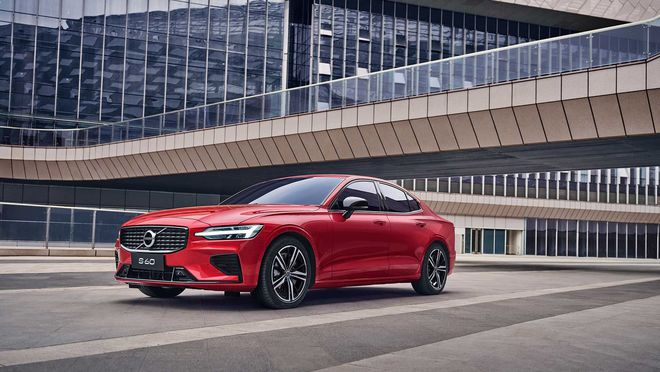Frequent failures, sales halved! The safest Volvo in the world, why can’t it be sold?
The inventor of three-point seat belts, the first automobile brand to use airbags, Volvo is undoubtedly the industry benchmark in terms of safety, but Volvo, the safety benchmark, has recently encountered trouble.
In May 2022, Volvo’s sales in China were only 9,488 vehicles, down 43.8% year-on-year, which was the second consecutive month, down more than 40% year-on-year. In April, Volvo sold 8,579 vehicles, down 47.8% year-on-year, and the sales volume was almost halved, which obviously exceeded the industry average. What’s worse, the combined sales volume of all Volvo models was not as good as that of LI, a new force in car making.

And this is the market answer sheet handed over by Volvo models when they all give substantial terminal discounts. Take Volvo S90 (parameter picture) as an example. The terminal discount of this car is as high as 70,000-80,000 yuan, and the terminal landing price is even in the early 300,000 s. It can be said that the car is being sold with a fracture. But how can Volvo, which has a broken bone, still not be sold?
The product update is slow, and the main models are exhausted.
In the fierce market competition environment, major car companies have been trying to introduce new products, update technology and keep up with the market development trend in recent years, but Volvo, a Swedish car company, is obviously a little slow in pace. Volvo’s three main models have not been replaced for a long time.
XC90 was released in 2014, S90 in 2016 and XC60 in 2017. Although there is a change in the middle, it is basically fine-tuned in appearance and power system, which is neither painful nor itchy, and it is difficult to form a new communication point, and it is also lack of freshness for consumers.

Safety and environmental protection cards can no longer be played.
Volvo’s models have always been known for their safety. Besides, the environmentally friendly interior materials is also its unique selling point. In addition, Volvo has no other differentiation advantages that can distinguish it from its competitors. Volvo’s models are obviously not as good as their competitors at the same level in terms of creating luxurious interior texture and driving texture. However, even for safety and environmental protection, these two cards are becoming more and more immovable.

In terms of safety, as long as the price of luxury brand models is more than 300,000, it may not be so extreme in safety, but it will not be particularly embarrassing. Moreover, with the wave of automobile electrification, more and more models are equipped with active safety systems, which also leads to Volvo’s safety brand, which is less and less attractive to consumers.
In terms of the environmental protection of the interior, many new brands have also begun to promote the interior of their own models and how much environmental protection materials have been used. Therefore, these two advantages that Volvo originally monopolized are gradually being disintegrated by competitors.

The complaint rate is high, with frequent failures.
Since the beginning of this year, some owners of Volvo S60 and S90 have found that the engine can’t start normally for many times, and even some vehicles have completely lost power and can’t be unlocked. Volvo dealers explain this problem as "software matching failure", claiming that it can be repaired by software upgrade, but the vehicle after maintenance and upgrade still has the problem of not starting. According to professional analysis, it may be because the 48V light mixing system of Volvo’s new model may have defects in its working logic, which may lead to power loss of the vehicle.
According to the information of many complaint websites such as Chezhi. com, the complaint sales ratio of Volvo’s models is not low. In the first quarter of this year, the complaint sales ratio of Volvo XC60 new energy was the highest. The main complaints were: suspected distribution reduction, car body accessories and electrical audio-visual system failure, driving safety auxiliary system failure, and engine/motor drive motor failure.
In the face of the long-standing problem of low-frequency resonance/abnormal sound, some car owners revealed that at that time, the dealer gave the "hush money" practice of signing a confidentiality agreement after compensation, but did not recall it.

Dislocation competition, hedging rate and brand premium are worrying.
Dislocation competition and substantial terminal concessions are the secrets of sales growth of Volvo models in previous years, but this practice has also brought great negative effects.
The method of high pricing and substantial terminal discount has seriously hurt Volvo’s brand image, which has led to the general public’s view that Volvo should not buy without breaking a bone, which has also led Volvo to continue the method of high pricing and high terminal discount when launching new models, which has also exhausted Volvo’s brand premium.
In addition, the way of substantial terminal concessions has led to a sharp decline in the value-keeping rate of Volvo models. Take several representative models as examples, the three-year value-keeping rate of Volvo XC60 is 44.67%, that of Volvo XC90 is 54.25%, that of Volvo S90 is 44.54%, and that of Volvo S60 is 45.74%. Even if you count the terminal concessions, the value-keeping rate of Volvo is calculated according to the actual landing price.

As it turns out, Volvo’s several brands, such as substantial discount, misplaced competition, safety and environmental protection, are becoming more and more immovable, and Volvo must make changes. We can also see that Volvo is also actively carrying out electrification transformation recently, hoping that Volvo can make a faster pace in electrification transformation. Perhaps only in this way can Volvo reverse the trend.